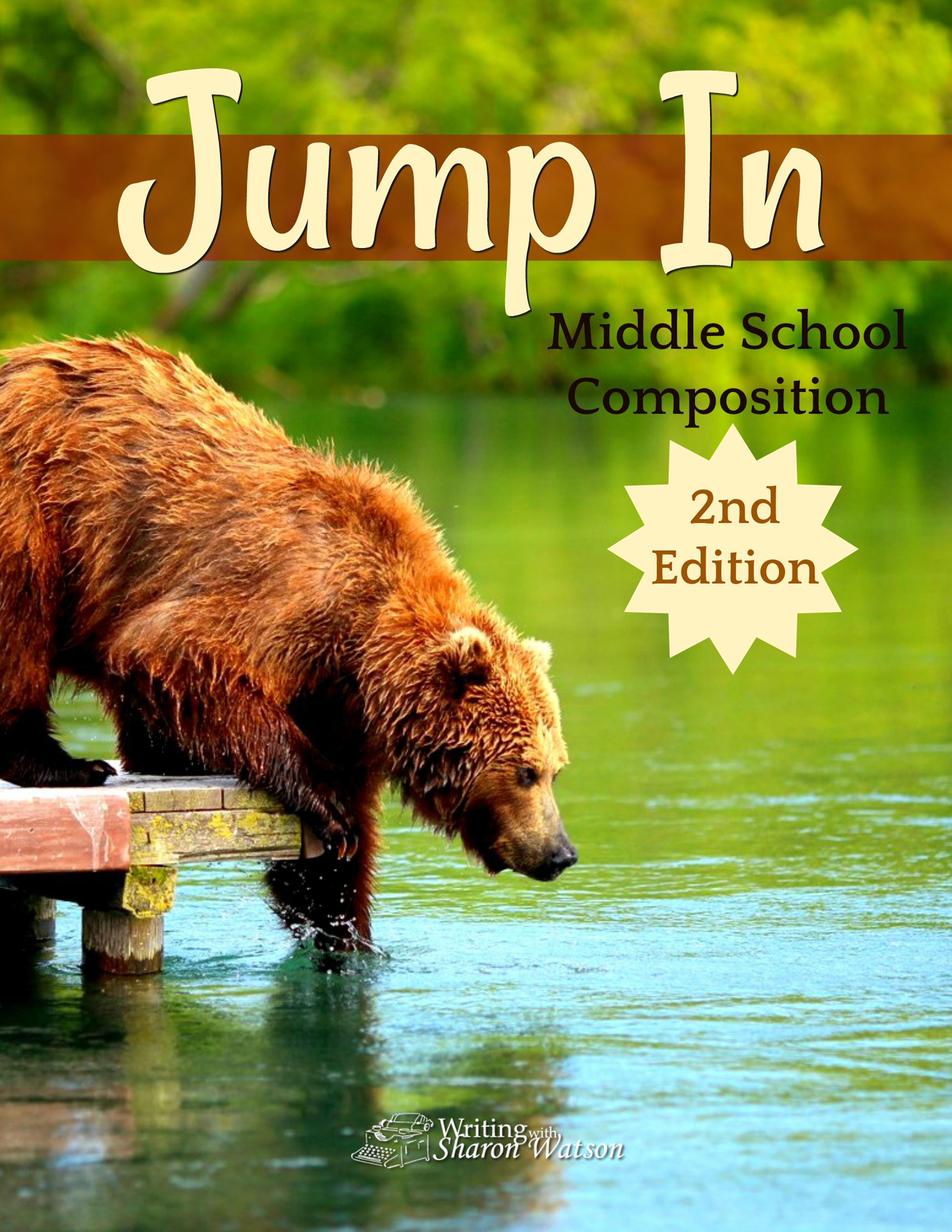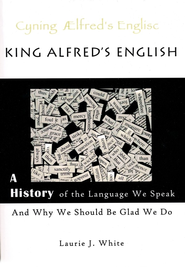You want to avoid plagiarism in your writing. Yes. Yes, you do.
Plagiarism is using someone else’s quotation, facts, statement, idea, or story without giving them credit.
So, how do you let your readers know that you borrowed the quotation, fact, and so on?
You cite your source by using an in-text citation. This simply means you are giving credit to someone for their information, and you tuck it into your essay.
An in-text citation comes in tremendously handy when you are writing an essay that does not include footnotes, a bibliography, or a works cited page.
This is a tutorial on how to easily create in-text citations. Robin Hood may be involved.
Here we go . . .
 Examples of in-text citations
Examples of in-text citations
Reporters and many other writers don’t use a bibliography. They have to include their sources in the body of their articles. Here’s a silly example of someone writing about pickles. Notice how the writer cites his source with this in-text citation (underlined here for instructional purposes only):
Dill pickles are much more popular than sweet pickles. In fact, according to www.welovepickles.com, pickle lovers buy four times more dill pickles than sweet.
The words according to announce that a fact or a quotation is coming next. The Website tells the readers where to look for that original information and where the writer got the information.
[Note: As many times as I’ve tried to get rid of the hyperlink in www.welovepickles.com, my site keeps putting it back on. You will get rid of the hyperlink in your papers by right-clicking on the hyperlink and selecting “Remove Hyperlink.”]
Paraphrasing Your Source
Next is another example of how to include your source without a bibliography. The underlining is added to show the source; you won’t underline it in your essay:
Police aren’t the only people who can arrest someone who is breaking the law. Dr. Sassafras of the Department of Natural Resources explains that any law enforcement conservation officer has the authority to arrest someone who is hunting without a license, catching more than the legal limit of fish, or speeding.
In this case, the writer told the readers who the information came from and where the person works. It is important to include both the person’s name (Dr. Sassafras) and his credentials or personal identification (of the Department of Natural Resources) so the readers will know that this information is believable.
Quoting Your Source
Below is almost the same paragraph. However, the writer is quoting Dr. Sassafras instead of paraphrasing him:
Police aren’t the only people who can arrest someone who is breaking the law. Dr. Sassafras of the Department of Natural Resources points out, “When people hunt without a license, go over their legal limit of fish, or speed, a law enforcement conservation officer can arrest them. He or she has full police powers.”
The writer still includes the source’s name (Dr. Sassafras) and where he works (of the Department of Natural Resources). But this time he uses quotation marks to indicate that he is not paraphrasing but quoting him.
Signal phrases
In-text citations use signal phrases such as according to and Dr. So-and-so says. Signal phrases signal to the reader that a fact or quotation is coming up and that it is not yours.
Credentials
In addition to signal phrases, you’ll include the source’s credentials. That way, people can trust the source better. For instance, “Dr. Sassafras” means nothing to readers. They don’t know who he is. But when we add “of the Department of Natural Resources,” people know they can trust the source. He’s someone who knows.
Robin Hood and in-text citations
Below are a few other signal phrases you can use to cite your sources, according to the Modern Language Association. Notice that most of the verbs are either in the present tense (“Robin Hood suggests that…”) or present perfect tense (“Robin Hood has suggested that…”), even if the person is long dead.
If you were writing a report on Robin Hood, your in-text citations might look like the ones below. I’ve made the citations bold so you can catch them. Yours will be in a normal font:
• Robin Hood, author of How I Take from the Rich and Give to the Poor, points out that he was doing the shire a favor.
• Robin Hood’s mortal enemy, the Sheriff of Nottingham, observes in his reports of the day, “He is nothing but a thieving, Saxon scoundrel.”
• Little John, Robin Hood’s large sidekick, insists that the Merry Men had nothing but good in their hearts, despite what others might have said.
• “Many times, the money we steal from the lords and ladies ends up in the wrong pockets. God, help us,” acknowledges Friar Tuck, a friend of Robin Hood’s, in his personal journals.
• As one who lived under Robin Hood’s protection for many years, Maid Marian believed that Robin Hood could do no wrong.
• “I don’t know where I’d be today,” admits Bessie Essex, a poor milkmaid of that time, “without the help of Robin Hood.”
• Robin Hood’s fan club, found at www.robinhoodisourman.org, claims that rumors of violence are false.
Get the idea? Notice the Website address in the last example. You’ll put the address of the main page in, not the whole address. So, instead of http://www.robinhoodisourman.org/join-the-club/, you’ll only use www.robinhoodisourman.org.
Remember to turn off your hyperlink by right clicking on the Website address. Then left click on “hyperlink” or “remove hyperlink.” That way, the address won’t be blue in your article.
Now it’s your turn: Complete the exercise below. Click here to download a PDF of the exercise.
Directions: Below are four sources and their information. Use each source, along with the information, to form four complete sentences, one for each source. Include an in-text citation in each sentence. There is more than one right way to make these into sentences with signal phrases and in-text citations. Choose your own verbs and how you’ll put the sentences together.
Source #1: Mark Twain
Credential: author of Roughing It
Quotation: “I was young and ignorant, and I envied my brother.”
Source #2: http://www.canalmuseum.com/
Credential: an informative Internet site for the Panama Canal
Quotation: “A ship traveling from New York to San Francisco can save 7,872 miles using the Panama Canal instead of going around South America.”
Source #3: C. S. Lewis
Credential: author of The Lion, the Witch, and the Wardrobe
Fact: has credited the creation of the faun Mr. Tumnus to a dream he had in his teens
Source #4: Maritza Ruiz
Credential: 13-year-old earthquake survivor
Quotation: “The ground was rolling under my feet. I felt like I was on a boat.”
Possible answers to the exercise:
- Mark Twain admitted in Roughing It, “I was young and ignorant, and I envied my brother.”
- According to www.canalmuseum.com, a great Internet site for the Panama Canal, “A ship traveling from New York to San Francisco can save 7,872 miles using the Panama Canal instead of going around South America.”
- C. S. Lewis, author of The Lion, the Witch, and the Wardrobe, said that he created the faun Mr. Tumnus from a dream he had in his teens.
- The 13-year-old earthquake survivor Maritza Ruiz said, “The ground was rolling under my feet. I felt like I was on a boat.”
Here’s more information on how to avoid plagiarism.
This tutorial is taken from a lesson in Jump In.
Click here for a tutorial on in-text citations for high school students.
Teachers, connect with Sharon on Facebook or Pinterest!
 Are your writers struggling? Do you wish you could figure out why your children won’t write? Would you love to have a peaceful writing class experience?
Are your writers struggling? Do you wish you could figure out why your children won’t write? Would you love to have a peaceful writing class experience?
Help your struggling writers—and you!—by identifying five hurdles to writing. Then learn practical actions you can take against those hurdles.
This article by me in The Old Schoolhouse magazine is also loaded with links to other helpful posts that will give you and your writers some welcome relief.
Click here to drain some of the tension from your writing class
Frustrated that your students don’t finish an essay or don’t know the steps to complete one? Worry no more! Click here for my latest article in The Informer about a super-practical writing schedule you WILL use!












